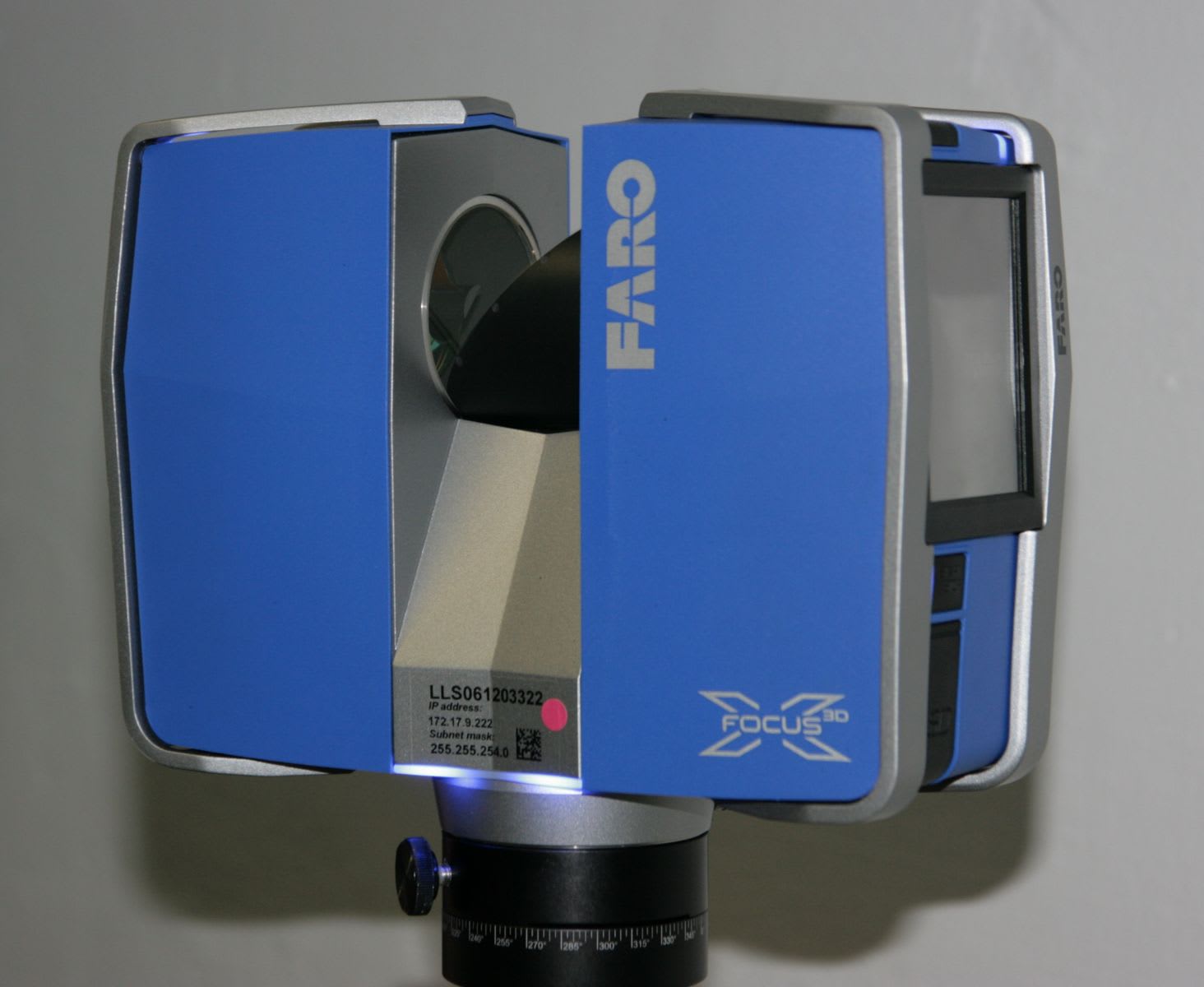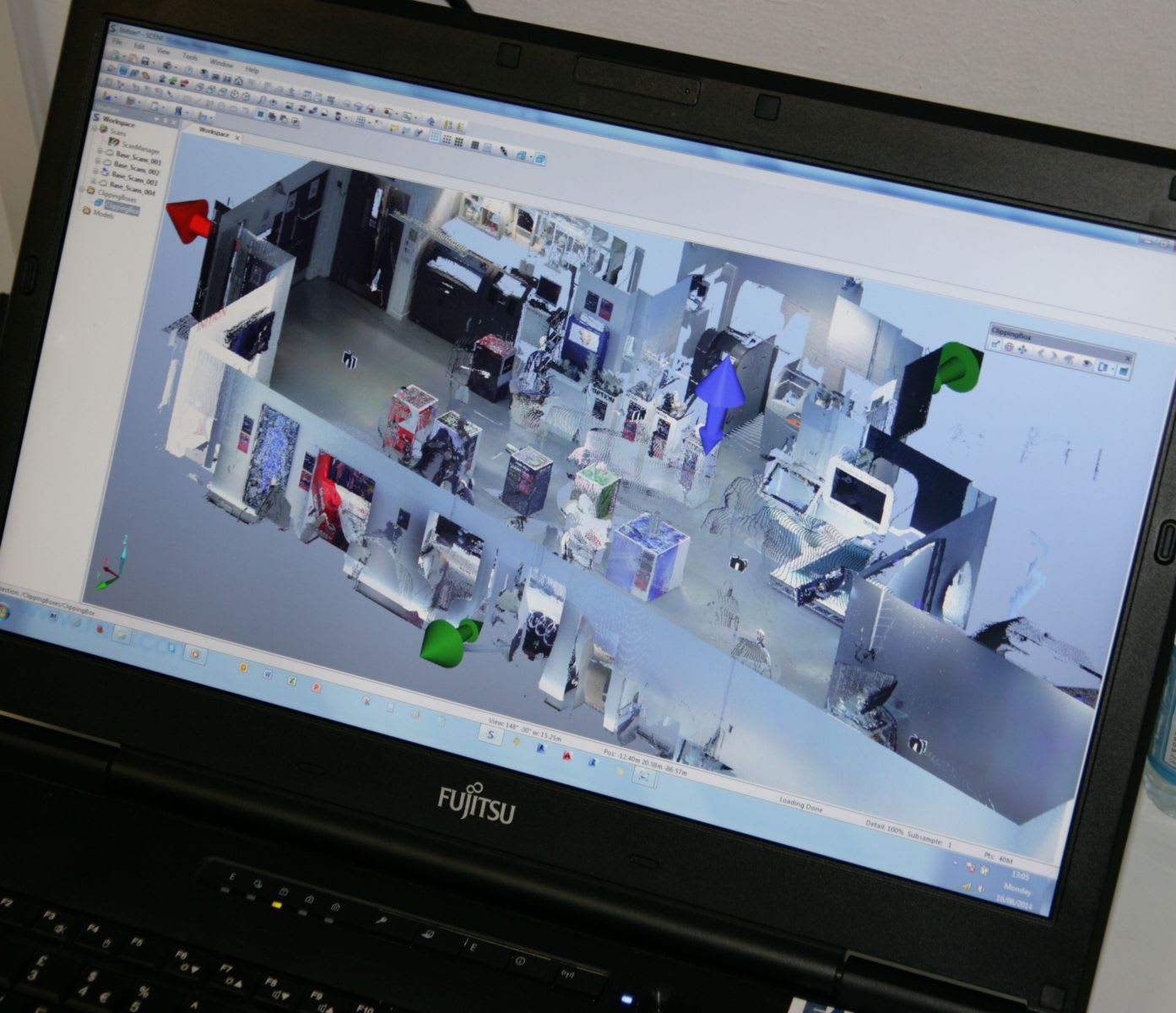3D scanning and printing: A thriving dimension
We take a look at 3D scanning and printing, a thriving sector that looks as if it's here to stay...
By Phil Rhodes 21 Jul 2014

The film industry has traditionally supported a wide variety of associated crafts. There's still a plaster shop at Shepperton Studios, where people coated in a fine layer of white powder produce set-building and prop making accessories that look astoundingly like they're not made of plaster. Likewise, the set decorators of Star Trek reputedly referred to the show as Sand Trek, given the amount of filling and sanding required to make the starship sets, mainly made out of plywood and two-by-fours, look appropriately as if they were made out of advanced man-made materials.
There is evidence, however, that at least some of these trades might be facing a little pressure from the world of laser scanning and 3D printing. OK, nobody's 3D printing entire spaceships yet, although it's presumably only a matter of time. But certainly in the somewhat more physically compact worlds of the prop and costume workshops, these techniques are being quite widely deployed.
A particularly good example is found in Guillermo del Toro's sci-fi blockbuster Pacific Rim. In case you gave it a miss, I'll explain that the film depicts pilots of giant robots who wear body armour of a type that will be familiar to science fiction fans everywhere – hard armour plates over a close-fitting undersuit. Traditionally, producing hard armour pieces of an adequately good fit might have required the actor to suffer a full body plaster casting process, followed by hours of work sculpting in clay, refining, casting and moulding to produce the final pieces, probably in fibreglass.
On Pacific Rim, Legacy FX used laser scanners to produce 3D computer models of the actors, modelled the armour pieces to suit in software, and used 3D printing techniques to output them to the real world.
Pacific Rim: 3D techniques were used to create the armoured suits
Most laser scanners operate by moving a laser rangefinder across the scene using a rotating mirror, taking often millions of range measurements as the beam moves. Some of them also take conventional photographs, producing not only a 3D shape for the scene or object under consideration, but also recording its surface colour. Devices may have enough range – up to a few hundred metres - to scan entire outdoor localities, although spatial resolution suffers at longer ranges.
On a smaller scale, they can be used to scan people or objects, with the shorter range making greater resolution possible. Naturally, given the complex geometry of something like a human being, several scans from various angles are required to record a complete shape; these scans may be made sequentially or simultaneously, with marker objects such as spheres being used to allow a computer to automatically fuse together the resulting data.
The results of work like this are provided as a point cloud, a data set of the 3D measurements provided by the scanner. This differs from the more conventional mesh of triangles that are more typical in computer graphics, and specialist software may be used to turn a point cloud into a polygonal mesh for use in conventional visual effects software.


Faro laser scanner / Faro laser scanner output
In the case of prop making or costume, it's necessary to output a 3D object back to the real world. Many current 3D printers do not produce usable output directly. Firstly, the materials used are often too fragile to make a wearable costume, and the expense of the process is high enough that it's still worth making moulds of the printed objects in flexible two-pack silicone and producing the final parts in fibreglass, in much the same way as it would always have been done.
This is especially relevant where multiple sets of a particular piece are required to provide backup against damage. Also, the fineness of finish in current 3D printer output is often not sufficiently good to be used directly, and hand techniques - filling and rubbing down - are sometimes necessary to bring the pieces up to screen standard before multiple copies are cast. It's no great risk to predict that 3D printers intended for even the home user will only grow in capability and affordability, though, and this situation is likely to change rapidly.
Similar approaches were used to produce the computer-world costumes for Tron: Legacy, with the final parts being cast in flexible foam rubber as opposed to hard fibreglass. In both Tron and Pacific Rim, the contrast against productions such as the original Star Wars, with its props and models built from things like model kit parts and plumbing fittings, can hardly be more pronounced, and it's easy to worry that something might be lost by these advancements.
Right now, the comparative expense of 3D printing, and the skillset required to run the associated software, is a deterrent. Laser scanning is also expensive; a single scanner from a company such as Fora can cost upwards of UK£50,000, and three might be required for quick, comfortable scanning of a person in reasonable time. Needless to say, the costs of both 3D input and output devices are likely to fall.
If you want to be a prop maker, then, it seems only realistic to brush up on your IT skills.
There is evidence, however, that at least some of these trades might be facing a little pressure from the world of laser scanning and 3D printing. OK, nobody's 3D printing entire spaceships yet, although it's presumably only a matter of time. But certainly in the somewhat more physically compact worlds of the prop and costume workshops, these techniques are being quite widely deployed.
A particularly good example is found in Guillermo del Toro's sci-fi blockbuster Pacific Rim. In case you gave it a miss, I'll explain that the film depicts pilots of giant robots who wear body armour of a type that will be familiar to science fiction fans everywhere – hard armour plates over a close-fitting undersuit. Traditionally, producing hard armour pieces of an adequately good fit might have required the actor to suffer a full body plaster casting process, followed by hours of work sculpting in clay, refining, casting and moulding to produce the final pieces, probably in fibreglass.
On Pacific Rim, Legacy FX used laser scanners to produce 3D computer models of the actors, modelled the armour pieces to suit in software, and used 3D printing techniques to output them to the real world.
Pacific Rim: 3D techniques were used to create the armoured suits
Most laser scanners operate by moving a laser rangefinder across the scene using a rotating mirror, taking often millions of range measurements as the beam moves. Some of them also take conventional photographs, producing not only a 3D shape for the scene or object under consideration, but also recording its surface colour. Devices may have enough range – up to a few hundred metres - to scan entire outdoor localities, although spatial resolution suffers at longer ranges.
On a smaller scale, they can be used to scan people or objects, with the shorter range making greater resolution possible. Naturally, given the complex geometry of something like a human being, several scans from various angles are required to record a complete shape; these scans may be made sequentially or simultaneously, with marker objects such as spheres being used to allow a computer to automatically fuse together the resulting data.
The results of work like this are provided as a point cloud, a data set of the 3D measurements provided by the scanner. This differs from the more conventional mesh of triangles that are more typical in computer graphics, and specialist software may be used to turn a point cloud into a polygonal mesh for use in conventional visual effects software.


Faro laser scanner / Faro laser scanner output
In the case of prop making or costume, it's necessary to output a 3D object back to the real world. Many current 3D printers do not produce usable output directly. Firstly, the materials used are often too fragile to make a wearable costume, and the expense of the process is high enough that it's still worth making moulds of the printed objects in flexible two-pack silicone and producing the final parts in fibreglass, in much the same way as it would always have been done.
This is especially relevant where multiple sets of a particular piece are required to provide backup against damage. Also, the fineness of finish in current 3D printer output is often not sufficiently good to be used directly, and hand techniques - filling and rubbing down - are sometimes necessary to bring the pieces up to screen standard before multiple copies are cast. It's no great risk to predict that 3D printers intended for even the home user will only grow in capability and affordability, though, and this situation is likely to change rapidly.
Similar approaches were used to produce the computer-world costumes for Tron: Legacy, with the final parts being cast in flexible foam rubber as opposed to hard fibreglass. In both Tron and Pacific Rim, the contrast against productions such as the original Star Wars, with its props and models built from things like model kit parts and plumbing fittings, can hardly be more pronounced, and it's easy to worry that something might be lost by these advancements.
Right now, the comparative expense of 3D printing, and the skillset required to run the associated software, is a deterrent. Laser scanning is also expensive; a single scanner from a company such as Fora can cost upwards of UK£50,000, and three might be required for quick, comfortable scanning of a person in reasonable time. Needless to say, the costs of both 3D input and output devices are likely to fall.
If you want to be a prop maker, then, it seems only realistic to brush up on your IT skills.
Latest news & features
Promote your services with KFTV
Choose from three profile types - Basic, Silver and Gold
Create ProfileWe offer a range of display advertising opportunities.
Learn More